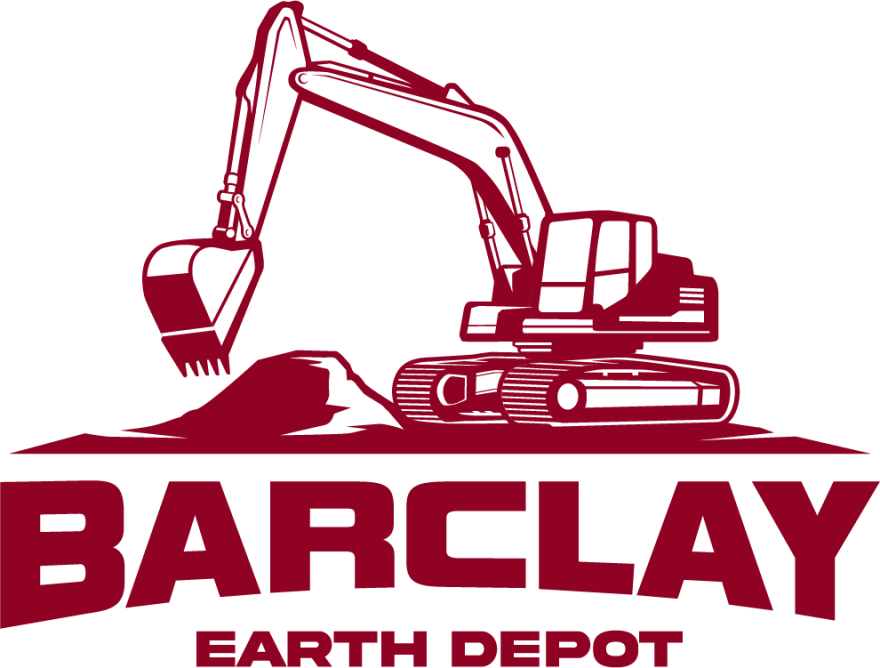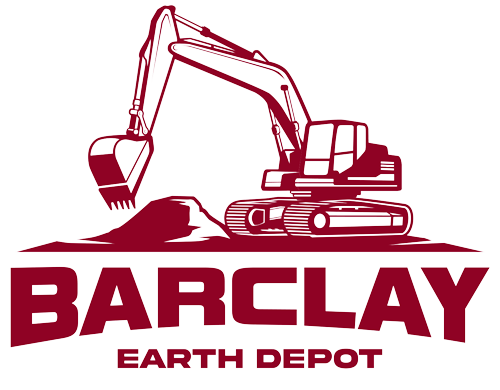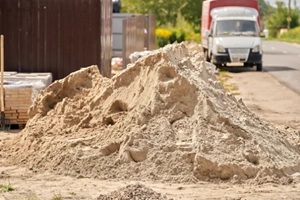 Construction sand comes in two main varieties, namely natural and manufactured. While natural deposits have historically supplied most sand for building projects, engineered manufacturing is now generating a significant and growing share.
Construction sand comes in two main varieties, namely natural and manufactured. While natural deposits have historically supplied most sand for building projects, engineered manufacturing is now generating a significant and growing share.
Beyond production variances, these two types diverge across factors, such as shape, performance, and workability. Knowing these differences means you can make smarter choices when sourcing your sand.
Defining Manufactured and Natural Sands
First, it’s essential to comprehend what qualifies sand as natural or manufactured. Here are the technical definitions:
- Natural sand: Loose granular sediment consists of small rock fragments and mineral grains broken down over the ages through river transport and weathering processes. Natural construction sand usually originate from riverbeds, beaches, inland dunes, and desert sand fields.
- Manufactured sand: A human-engineered substitute for natural sand grains derived from crushing rocks, quarry stones, dredged fill, or waste aggregates from demolition or mining activities. Manufacturing methods may involve jaw crushers, impact crushers, cones, or vertical shaft impactors that selectively break down stones for specific gradations and characteristics. The quarry and mineral composition influence the final properties.
Production and Sources
Natural deposits traditionally supply most of the sand required for global building needs. But manufacturing now generates significant volumes, and these volumes are on the rise as natural resources keep tightening.
Manufactured sand stems from controlled crushing operations that yield consistent particle sizes that are not dependent on natural variability. The production process is regulated to modify sand to meet different specifications. Manufacturing plants set up at quarries or urban centers closer to market demand cut transportation costs/energy for delivery compared to remote natural deposits.
Without relying on nature, manufacturers can produce sand to order based on customer particle size requirements. However, natural sand still fills certain roles better. Availability and pricing also factor significantly in material decisions.
Appearance and Shape
Looking at samples side by side, manufactured sands have visibly sharper, more angular particles while natural sands display rounded, smoothed grains.
The jagged grains of manufactured sand interlock nicely for increased stability in concrete and mortar. Natural sands’ softer shaping won’t grip as effectively. If magnified, manufactured particles resemble broken stones. In contrast, natural sands shift towards oval or spherical shapes from long-term water transport that abrades their mineral edges.
The underlying mineral composition contributes to color variations in respective sands. Natural deposits usually present a blended multi-hue coloring. Manufactured sand inherits the dominant pigments of the source rock, meaning that it leans more toward being monochromatic. For instance, granite-sourced manufactured sand would be a light speckled gray, while sandstone crushing produces beige-brown particles.
Performance Characteristics
Functionally, several performance metrics distinguish manufactured sand from natural products:
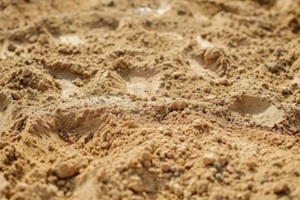 Durability/Hardness: Natural, rounded grains demonstrate better durability against fragmentation from handling pressures, while angular, manufactured particles endure more fracturing. Both are sufficiently capable of withstanding concrete mixing pressures.
Durability/Hardness: Natural, rounded grains demonstrate better durability against fragmentation from handling pressures, while angular, manufactured particles endure more fracturing. Both are sufficiently capable of withstanding concrete mixing pressures.- Permeability: Natural sands show higher permeability rates, allowing better water drainage dispersion between particles. Denser manufactured sands resist water penetration more.
- Purity: Natural sands suffer substantial unwanted adulteration from multiple minerals and residues introduced by weathering and transport blending. Manufactured sand is produced from selected target minerals, yielding higher purity.
- Gradation consistency: Single-source manufacturing quarries yield continuous, uniform output. Natural results fluctuate unpredictably as deposits shift.
- Supply sustainability: Natural sand sources keep declining as urbanization expands. Manufactured production offers an indefinitely renewable controlled supply.
Usage Guidance
Determining the best construction sand for your project requires matching specific material characteristics with your application needs. Keep these general usage recommendations in mind:
Natural Sand
When sourcing sand for general construction purposes, landscaping uses, asphalt paving mixes, or lower-strength concrete, natural sand products are a good option due to their balanced properties.
General Construction Purposes
The moderately rounded grains and balanced mineral mix of natural sands make it useful for most basic building needs. The particles pack tightly enough for structural stability, yet allow sufficient airflow space for concrete curing. Natural sand’s softer shaping won’t grip as effectively as sharper manufactured sand. However, it still holds up for general use across footings, walls, slabs, and masonry.
Landscaping Bedding
Closely mimicking native surroundings, natural sand supports better moisture retention for plants. The sub-angular particles avoid excessive drainage. Natural sand mineral content brings no risk of over-leaching hazardous elements into adjacent landscape soils.
Asphalt Paving Sand
The smooth, rounded quartz particles and uniform medium grain size of natural sand make an ideal lightweight mineral filler in voids between larger aggregates in asphalt. It binds readily with bitumen, enhancing mix cohesion and flexible pavement integrity at affordable pricing.
Manufactured Sand
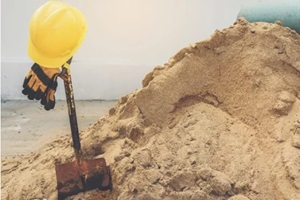
With their engineered consistency, manufactured sands shine for projects requiring concrete with enhanced durability specs, tile flooring, specialized mortars, or drainage filtration.
High Strength Concrete
If your construction plans specify high-performance concrete for heavy loads/tolerances, manufactured sand is likely a better choice for fine aggregate than natural sand. The highly angular crushed particles with a rougher texture create stronger mechanical gripping binder action with the cement paste. This improved structural cohesion integrity to withstand heavier operational stresses and natural weathering factors.
Tile Mortar Bedding
The angular particles of manufactured sand increase mortar compressive strength, enabling it to withstand tile bonding pressures better during installation. The sharp edges also interlock tightly to resist shrinkage that could loosen tiles. Manufactured sand mortar cures faster, allowing quicker grouting. Its stability and adhesion deliver long-lasting tile assemblies.
Stucco and Plasters
Improved gradation and purity control during manufacturing give manufactured sand consistent particle sizes that blend smoothly for premium workability. This makes plaster easier to apply without sagging and reduces hand troweling labor. The manufactured angularity also interlocks more tightly to resist persistent hairline cracking.
Drainage Filtration
The angular interlocking particles of manufactured sand provide improved permeability. Water flows through easily without too much dispersion or washout risk. Natural sand’s rounded shape often drains too quickly. For quality filtration bedding, manufactured sand is the best choice.
Choose Your Winning Construction Sand Type From Barclay Earth Depot
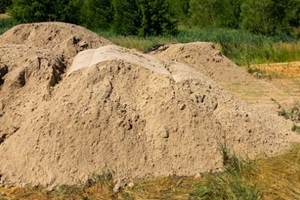 With such a wide range of sand and aggregate solutions, selecting the right products for your projects can be overwhelming. But Barclay Earth Depot makes it easy.
With such a wide range of sand and aggregate solutions, selecting the right products for your projects can be overwhelming. But Barclay Earth Depot makes it easy.
Our team possesses specialized expertise to recommend specific materials customized to your applications. We carry an abundant inventory of bulk sands to tackle any construction or landscaping job.
Contact us today at (941) WE-DIG-IT or online to learn how our personalized guidance and premium sand offerings can streamline your upcoming projects.
